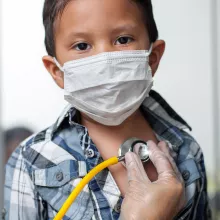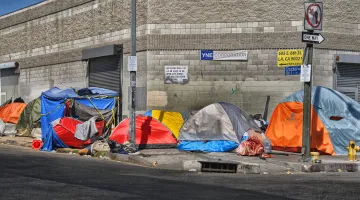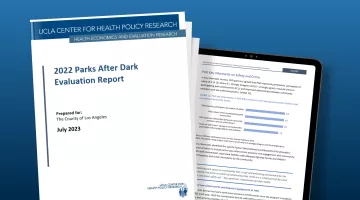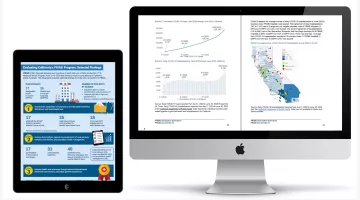Menu - African American Infant and Maternal Mortality (AAIMM) Prevention Initiative Evaluation
UCLA CHPR is evaluating the implementation and outcomes of the AAIMM initiative, which is designed to reduce Black and African American infant and maternal mortality and morbidity in Los Angeles County.
Black and African American families are disproportionately impacted by birth inequities.
According to BlackInfantsandFamilies.org, Black and African American babies in Los Angeles County are two to three times more likely to die before their first birthday than babies of other races. Black and African American women in Los Angeles County are four times more likely to die as a result of pregnancy complications than women of other races.
The Los Angeles Department of Public Health, in partnership with First 5 LA and the LA County Department of Health Services, Department of Mental Health, Black-led community organizations, mental and health care providers, funders, and community members, launched the Los Angeles County African American Infant and Maternal Mortality (AAIMM) Prevention Initiative to address the high rates of Black infant and maternal deaths countywide.
The AAIMM Initiative addresses the underlying causes of disparities in maternal and infant health by recognizing that the root cause is the stress resulting from a Black person’s exposure to racism. This stress has a significant impact on the bodies of Black birthing persons. AAIMM also acknowledges the influence of societal structures that perpetuate racism and hinder culturally competent care and recognizes the presence of implicit and overt bias within the support systems that affect Black families. By approaching its work from this perspective, the AAIMM Initiative aims to dismantle the systemic barriers and ensure equitable and culturally sensitive care for Black birthing persons and their families.
The UCLA Center for Health Policy Research is currently evaluating the AAIMM Prevention Initiative and findings will be released in summer/fall 2023.



















